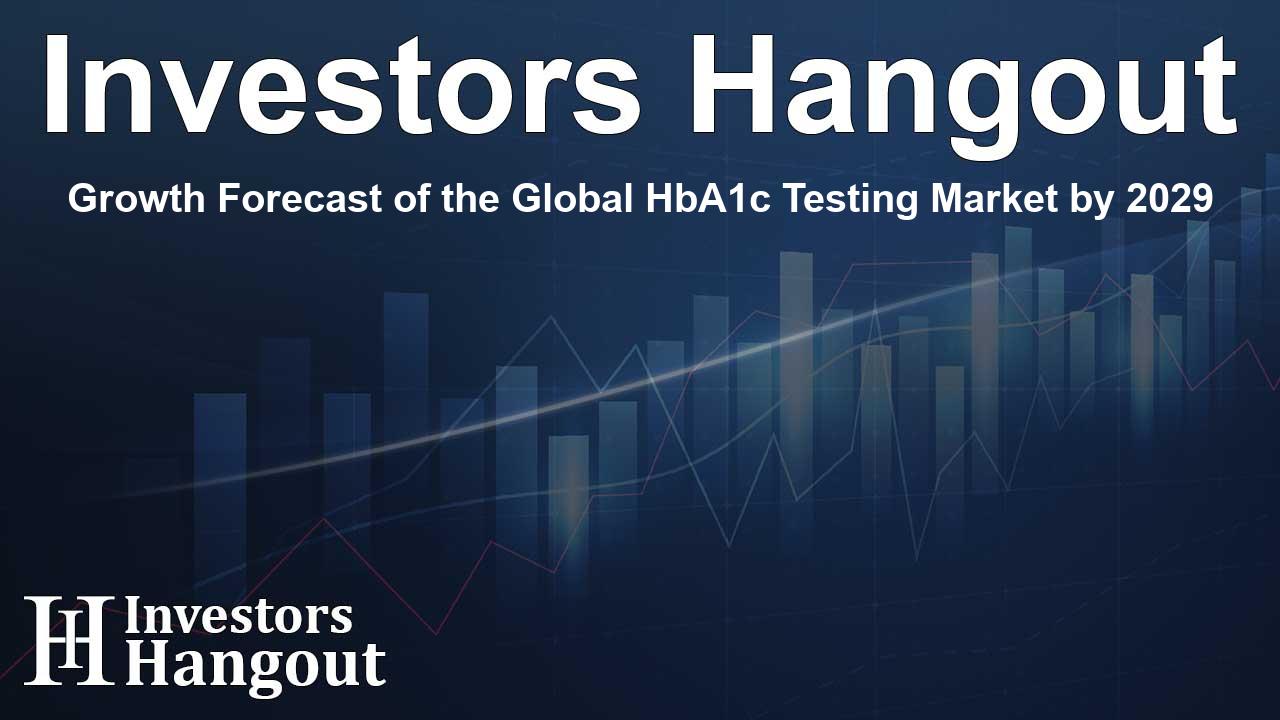Growth Forecast of the Global HbA1c Testing Market by 2029

Anticipating Growth in the HbA1c Testing Market
The global HbA1c in vitro diagnostics (IVD) market is undergoing a transformation, with projections indicating a rise from $1.7 billion to $2.3 billion by 2029. This growth, corresponding to a compound annual growth rate (CAGR) of 5.7%, underscores the increasing importance of HbA1c testing in diabetes management and intervention strategies.
Key Drivers of Market Expansion
One of the most significant factors driving this growth is the swift adoption of point-of-care (POC) testing methods. These advancements are reshaping the diagnostic landscape, making it more efficient for healthcare providers to offer timely and accurate assessments. Daniel Granderson, a Senior Editor at Kalorama Information, highlights this shift, stating that laboratory-based testing has traditionally been viewed as the best option. However, the growth of POC technology is revolutionizing how diabetes care is approached.
Emerging Markets and Demographics
The report indicates notable growth in various regions, particularly in North America and Europe, which together accounted for over 73% of market revenues in 2024. However, the Asia-Pacific and Latin American regions are becoming increasingly important players due to factors such as an aging population and rising incidence of diabetes. As these markets expand their healthcare infrastructures, the demand for HbA1c testing will likely accelerate.
Advancements in Technology
The development of innovative technologies like mobile-connected assays, artificial intelligence (AI), and nanotech solutions are making it possible for healthcare providers to monitor HbA1c levels in real-time from home. This shift towards home-based monitoring aligns with the broader trend of personalization in healthcare, which aims to tailor treatment to individual needs.
Market Competitors and Leaders
Today, Abbott dominates the market with a 17% share, followed closely by Roche at 11% and Bio-Rad. The competitive landscape is illustrated by the top five firms who collectively hold 45% of the market share for HbA1c testing. As players in this field strive for innovation, we expect to see continued dynamics within these ranks.
Significance of HbA1c Testing Today
As diabetes rates rise globally, there is a heightened focus on chronic disease management and cost reduction in healthcare systems. HbA1c testing has emerged as a cornerstone in enhancing patient outcomes. This report aims to equip stakeholders with insights into:
- The geographic and technological areas where growth is anticipated.
- Strategies for market entry or expansion.
- Emerging products and players gaining market share.
- Challenges in reimbursement, pricing, and procurement.
- Investment and research priorities within the industry.
Professionals and organizations in the diagnostics and healthcare sectors will find the predictive analysis and competitive insights in this report invaluable as they plan for the future.
Who Should Consider This Report?
The report targets a diverse audience, including:
- Companies specializing in diagnostics and medical devices.
- Strategic planners and business development professionals.
- Investors and venture capitalists.
- Healthcare providers and laboratory networks.
- Policy makers and reimbursement authorities.
Whether it’s for developing a forward-looking product roadmap or considering acquisition opportunities, stakeholders are encouraged to engage with this comprehensive analysis.
Frequently Asked Questions
What is the projected growth rate of the HbA1c market?
The global HbA1c market is projected to reach $2.3 billion by 2029, with a CAGR of 5.7%.
Why is point-of-care testing becoming more popular?
POC testing offers convenience and faster results, making it increasingly valuable in managing diabetes.
What technologies are influencing the HbA1c market?
Emerging technologies include mobile-connected assays, AI, and nanotech that enable real-time monitoring from home.
Who are the major competitors in the HbA1c testing market?
Abbott, Roche, and Bio-Rad are among the leading competitors, with Abbott holding the largest market share.
Why is HbA1c testing essential in healthcare?
HbA1c testing is central to chronic disease management, aiding in improving patient outcomes as diabetes rates increase.
About The Author
Contact Evelyn Baker privately here. Or send an email with ATTN: Evelyn Baker as the subject to contact@investorshangout.com.
About Investors Hangout
Investors Hangout is a leading online stock forum for financial discussion and learning, offering a wide range of free tools and resources. It draws in traders of all levels, who exchange market knowledge, investigate trading tactics, and keep an eye on industry developments in real time. Featuring financial articles, stock message boards, quotes, charts, company profiles, and live news updates. Through cooperative learning and a wealth of informational resources, it helps users from novices creating their first portfolios to experts honing their techniques. Join Investors Hangout today: https://investorshangout.com/
The content of this article is based on factual, publicly available information and does not represent legal, financial, or investment advice. Investors Hangout does not offer financial advice, and the author is not a licensed financial advisor. Consult a qualified advisor before making any financial or investment decisions based on this article. This article should not be considered advice to purchase, sell, or hold any securities or other investments. If any of the material provided here is inaccurate, please contact us for corrections.
